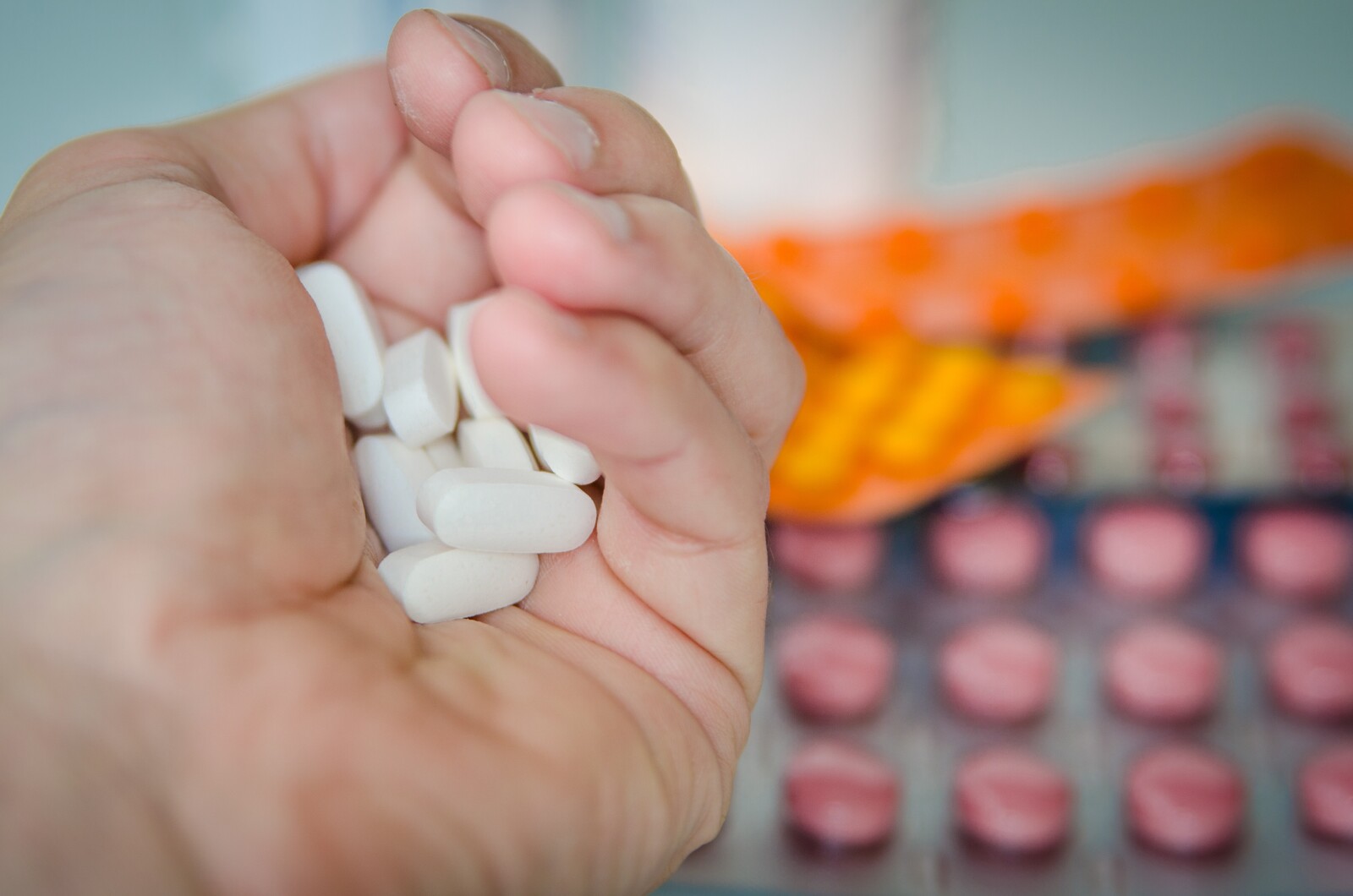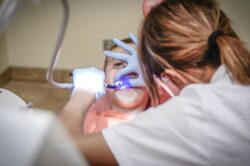Drug Side Effects & Medical Device Complications
"As the saying goes, 'every rose has its thorn.' When it comes to healthcare, the 'thorn' often presents itself as drug side effects and medical device complications. In this article, we navigate the complex terrain of potential side effects, unpack the dangers of medical device complications, and delve into the role of the FDA in ensuring safety. We also explore the disease-specific considerations and the balance of benefits and risks in medical treatments."

Key Takeaways
- Severe side effects from drugs can range from infections to death.
- The FDA can add warnings to a drug's label if there are numerous reports of a particular problem.
- Adverse events refer to side effects or other problematic consequences of drugs and medical devices.
- Manufacturers, regulators, and healthcare professionals must weigh the benefits and risks of a drug or device.
Understanding Severe Drug Side Effects
In the realm of pharmaceutical treatments, gaining a comprehensive understanding of severe drug side effects, ranging from life-threatening conditions to debilitating disabilities, is crucial for both medical professionals and patients alike. These adverse reactions can occur due to potential drug interactions, especially in patients with complex medication regimens. For instance, two or more drugs, when taken concurrently, can interact negatively, leading to unexpected and sometimes severe outcomes. Furthermore, understanding the long term consequences of drug usage is also paramount. Certain medications, while providing immediate relief or treatment, may lead to substantial health issues over time, such as organ damage, dependency, or other chronic conditions. Thus, the importance of comprehensively understanding severe drug side effects cannot be underestimated in ensuring safe and effective patient care.
The Dangers of Medical Device Complications
While drugs can have severe side effects, it is equally important to note that medical devices, too, can lead to serious complications, thus posing significant dangers to patient safety. For instance, the risks of surgical implants range from infection, bleeding, and in worst cases, rejection by the body. Similarly, complications of pacemakers can include infection at the pacemaker site, allergic response to the device, or failure of the device to regulate heartbeats properly. These complications can naturally lead to severe health impacts. Therefore, proper meticulous pre-operative planning, skilled surgical implantation, and rigorous post-operative care are crucial to mitigate these risks. It is paramount for healthcare providers and patients to be fully aware of potential complications to make informed decisions.
The Role of FDA in Drug and Device Safety
The U.S. Food and Drug Administration (FDA) carries out a critical role in ensuring drug and medical device safety by regulating their manufacture, marketing, and distribution to protect public health. This role of FDA in drug and device safety extends to monitoring the products once they reach the market, with the aim of identifying and addressing any adverse effects or complications that may arise. Through the FDA's oversight and regulation, manufacturers are held accountable for the safety and efficacy of their products. The FDA also maintains databases to track adverse events and uses this information to take corrective measures, such as issuing safety alerts or requiring changes to a product's label. Thus, the FDA plays an indispensable role in safeguarding public health.
The Balance of Benefits and Risks in Medical Treatment
Balancing a patient's potential benefits against the possible risks is a fundamental aspect of any medical treatment decision-making process. This balance is greatly influenced by ethical considerations that prioritize patient safety and well-being. Patient empowerment is crucial in this equation as it allows individuals to actively participate in their treatment plan, understanding the potential benefits and risks involved. The choice of a particular drug or medical device often involves a complex interplay of these factors. A patient's unique health status, the severity of the condition, the effectiveness of the treatment, and the potential side effects or complications all contribute to this decision. Therefore, the balance of benefits and risks in medical treatment remains a dynamic process that requires constant monitoring and evaluation.
Medical Device Categories and Associated Risks
Understanding the various categories of medical devices and the risks associated with each is crucial for both healthcare professionals and patients in making informed decisions about treatment options. The medical device regulation plays a pivotal role in ensuring the safety and efficacy of these devices. From diagnostic tools to therapeutic equipment, each category carries its unique set of risks. Surgical devices, for instance, may lead to surgical complications such as infection, device malfunction, or adverse patient reactions. Implantable devices like pacemakers or joint replacements can pose long-term risks including device failure or rejection by the body. The regulation of these devices hence becomes crucial to mitigate potential risks. Informed decision-making in healthcare thus requires thorough understanding of these categories and associated risks.
The FDA’s 510(k) Clearance Process Explained
Navigating the intricacies of the FDA's 510(k) clearance process is critical for understanding how medical devices are evaluated and approved for market release in the United States. The 510(k) process permits the commercialization of devices deemed substantially equivalent to products already on the market. The impact of limited testing on medical device safety, however, can be concerning, as potential risks may remain undetected until post-market surveillance. Healthcare professionals play a pivotal role in reporting adverse events, contributing to the post-market surveillance system. Their reports can help detect previously unknown risks and lead to necessary updates in device labeling, recalls, or even revoking of clearance. Understanding this process is key to assessing the safety and efficacy of medical devices.
Identifying Serious Complications From Design Flaws and Defects
Despite rigorous testing and safety measures, medical devices can still exhibit serious complications due to design flaws and defects, posing significant risks to patient health and safety. Identifying common complications is crucial in preventing medical device failures. These complications can include device malfunction, infection, or adverse tissue reactions. It is essential for healthcare providers and patients to report any suspected device-related issues to the manufacturer and regulatory bodies. Vigilant post-market surveillance can detect design flaws and defects early, facilitating timely recalls or modifications. Concurrently, the medical community must actively participate in ongoing education about device use and potential complications. This collective effort can significantly enhance the safety and effectiveness of medical devices, thereby improving patient outcomes.
Tracking and Reporting of Adverse Events
Regularly tracking and reporting adverse events is both a critical and challenging aspect of healthcare, as it aids in identifying potential safety concerns related to drugs and medical devices, and contributes to the overall improvement of patient safety. This process involves tracking adverse events in clinical trials, which is a systematic way of collecting data to assess the safety and effectiveness of new drugs or devices. Furthermore, patient reporting plays a significant role in identifying drug side effects. Patients provide first-hand information about their experiences, which can help in uncovering previously unknown side effects. Therefore, encouraging patient reporting and enhancing systems for tracking adverse events in clinical trials are crucial steps towards ensuring patient safety and improving healthcare outcomes.
The Impact of Scientific Studies on Public Health Warnings
Scientific studies play a crucial role in shaping public health warnings, and they often serve as the foundational evidence that informs decisions about drug and device safety. The impact of scientific studies on public health warnings is profound, with research findings often leading to necessary revisions in drug labeling and patient education materials. Rigorous studies provide insights into potential side effects and complications, enabling healthcare professionals and patients to make informed decisions about treatment options. Evaluating the effectiveness of drug labeling and patient education also relies on these studies. For instance, if a study reveals that patients misunderstand certain language in drug labels, revisions can be made. Ultimately, scientific studies guide our understanding of drug and device safety, underscoring their indispensable role in public health.
Navigating Minor Side Effects and Complications
Approximately 70 percent of patients will experience minor side effects or complications from prescription drugs and medical devices at some point in their treatment journey. Recognizing minor side effects early, such as nausea or mild discomfort, can facilitate prompt intervention and prevent escalation. Minor complications, too, need proper attention and management. Managing complications effectively involves regular communication with healthcare providers, adherence to prescribed medication or device usage guidelines, and maintaining a health-conscious lifestyle. It's crucial to remember that while these side effects or complications may be minor, they can impact a patient's quality of life. Therefore, a proactive approach towards recognizing and managing these occurrences can greatly enhance treatment outcomes and overall patient wellbeing.
Serious Health Risks Posed by Consumer Products
A significant number of consumer products, both medical and non-medical, can pose serious health risks, and understanding these risks is essential for safeguarding public health. Consumer product dangers extend beyond immediate physical harm; they can also lead to long-term effects challenging to predict and manage. For instance, some cosmetics contain harmful chemicals that, with prolonged use, can contribute to skin damage or cancer. Furthermore, electronic devices emit radiation that, over time, may increase the risk of certain cancers. Even seemingly innocuous household items like cleaning products or non-stick cookware can release harmful substances into the environment, contributing to the long term effects of consumer products on health. Therefore, it is critical for consumers to be aware and make informed decisions about the products they use daily.
Disease-Specific Risks and Considerations
While it is critical to understand the general risks associated with drugs and medical devices, it is equally important to consider the disease-specific risks and special considerations that may arise when these are used in the context of specific medical conditions. Disease specific medication interactions can significantly impact a patient's treatment efficacy and overall health. For instance, certain drugs can interfere with the absorption and effectiveness of cancer medications, complicating the process of managing risks in cancer treatment. Similarly, patients with conditions like diabetes or heart disease may experience unique risks or side effects due to their existing medications or devices. Therefore, a careful, disease-specific approach is essential when considering the potential benefits and risks of a drug or medical device.
The Interplay of Diabetes and Medication Side Effects
Given that diabetes is a prevalent chronic condition, it is crucial to understand how the side effects of various medications can potentially impact the management and progression of this disease. Medication management for diabetes involves the careful selection and administration of drugs to control blood glucose levels. However, potential drug interactions for diabetes patients may complicate this process. Certain medications can interfere with glucose control, exacerbate diabetes symptoms, or interfere with the effectiveness of anti-diabetic drugs. Additionally, side effects like weight gain or hypoglycemia can further complicate diabetes management. Therefore, healthcare providers must be vigilant in monitoring these potential interactions and side effects to optimize patient care and mitigate the risks associated with diabetes medication management.
Heart Disease, Stroke, and Medication Risks
Nearly half of all adults in the United States have some form of cardiovascular disease, and the risk of stroke or other complications can significantly increase with the use of certain medications or medical devices. It's crucial to understand potential medication interactions and follow drug safety guidelines to mitigate these risks. Certain drugs, including NSAIDs, decongestants, and weight-loss drugs, can exacerbate heart disease and elevate stroke risks. Furthermore, combining multiple medications can lead to dangerous interactions, intensifying these risks. Therefore, patients should inform their healthcare providers about all medications they are taking. Prior consultation with a healthcare professional is recommended before starting any new medication, ensuring the benefits outweigh potential risks and complications.
How Other Medications Can Affect Cancer Treatment
Frequently, the efficacy of cancer treatments can be significantly impacted by the concurrent use of other medications. These interactions can alter how the body absorbs and processes cancer drugs, potentially reducing their effectiveness or causing unexpected side effects. For instance, certain antibiotics, antifungals, and even over-the-counter medications can interfere with chemotherapy drugs. It's imperative that healthcare providers are fully aware of all medications a patient is taking, including supplements and non-prescription drugs, to avoid harmful interactions. This information plays a crucial role in making informed treatment decisions. Ultimately, effective communication between patients and healthcare professionals is key in managing these interactions and ensuring the optimal effectiveness of cancer treatment.
Frequently Asked Questions
What Steps Can Patients Take to Report Adverse Events or Complications From Drugs or Medical Devices?
Patients can report adverse events or complications from drugs or medical devices through various channels. They can contact their healthcare provider or the FDA directly. Patient advocacy groups also offer support and resources for reporting. It's crucial to document the adverse event accurately, including the specific drug or device involved, the nature of the complication, and its impact on health. This information helps regulatory bodies monitor safety and take appropriate action.
How Can Healthcare Professionals Help Mitigate the Risks Associated With Severe Drug Side Effects and Medical Device Complications?
Healthcare professionals can mitigate risks associated with severe drug side effects and medical device complications through comprehensive provider education and effective risk communication. It involves staying updated on recent research, understanding potential complications, and using this knowledge to guide patient care. Proper communication about the risks and benefits of various treatments allows patients to make informed decisions. Close monitoring and prompt reporting of adverse events can also help to identify and address issues early.
What Are Some Examples of High-Risk Medical Devices That Require Advanced Safety Studies?
High-risk medical devices, such as cardiac stents, pacemakers, and hip implants, necessitate advanced safety studies due to their direct impact on critical bodily functions. Ensuring patient safety in this context calls for rigorous device recall procedures and continuous medical device innovation. These measures help to identify potential design flaws or manufacturing defects, mitigate health risks, and enhance the overall safety and efficacy of these devices.
How Can Consumers Protect Themselves From Serious Health Risks Posed by Certain Consumer Products Like Talcum Powder and E-Cigarettes?
To protect themselves from serious health risks posed by products like talcum powder and e-cigarettes, consumers should increase their awareness about these products. This can be achieved by thoroughly reading product labels and researching potential health risks associated with the product. Additionally, consumers should follow the product usage instructions strictly and consult healthcare professionals for advice on the potential risks and benefits of using certain consumer products.
How Do Certain Medications Specifically Affect the Effectiveness of Treatments for Diseases Like Diabetes, Heart Disease, and Cancer?
Medications can significantly impact the efficacy of treatments for diseases like diabetes, heart disease, and cancer. This intricate dance of medication interactions can either enhance or hinder therapeutic outcomes. For instance, certain drugs can interfere with insulin production or response in diabetes, or affect the absorption and effectiveness of cancer drugs. Likewise, some medications can pose serious risks to those with heart disease. Hence, it's imperative to consult healthcare professionals about potential interactions to optimize treatment efficacy.
Conclusion
In conclusion, vigilance remains paramount in healthcare, given the potential side effects of drugs and complications from medical devices. FDA's role in ensuring safety is critical, as is the balance of benefits and risks in treatment. For instance, a patient with heart disease may face heightened risks when incorporating a new medication into their regimen, emphasizing the importance of personalized healthcare. Thus, understanding these complexities can lead to more informed decisions, enhancing patient safety and health outcomes.

This post has been generated by AI and was not reviewed by editors. This is Not legal advice. Please consult with an attorney.




